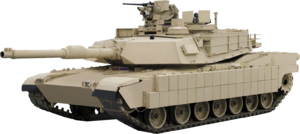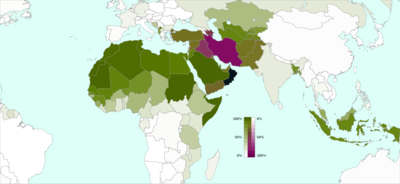Neither the new technology nor your status as officers will keep you above the danger. Sergeant Major Plumley and I come from the paratroopers, where the officer is always the first man out of the plane. Because to follow your instincts and inspire your men by your example, you have to be with them — where the metal meets the meat...
LTC Hal Moore

ISIS (the Ebola of terrorist organizations—the parallels are striking) seems to be particularly adept at maneuver warfare—specifically by massing a large number of pickups fitted with heavy machine guns (a hundred or more ‘technicals’ at a time)—and then moving fast and hitting with overwhelming force at some crucial point.
A hundred heavy machine guns equates to awesome firepower—and I have no doubt they have mortars and RPGs as well—and, inevitably, AKs. The point is that they can, and do, move very fast—and require only minimal logistical support.
Much bite. Little stomach.
Can U.S. forces move as fast? We can—but normally we don’t. But we have air power in spades—both fixed wing and rotary, together with drones and Precision Guided Munitions.
Add in their fearsome—and well justified—reputation for brutality, and it is scarcely a surprise that ISIS forces have been as successful as they have been. And now they have been able to add a large amount of American-made weapons and equipment taken from the Iraqi army.
Despite our flaws—which can be considerable—they haven’t a hope in hell—IF WE ACT! Maneuver warfare is base on decisiveness, and speed. OBSERVE, ORIENT, DECIDE, ACT. This is John Boyd’s famous OODA loop—and it is no more than common sense.
But deciding and acting can be awesomely difficult.
Nominally, the U.S. Army espouses maneuver warfare. In practice, we seem to be disconcertingly prone to “bombard and occupy” as my friend, Mike Sparks, puts it.
That means we are more into breaking things—and killing people through sheer firepower—than out-psyching an enemy through speed of maneuver.
Iraq illustrates this disconcerting tendency all too well. Twice, by the way. Back in 1992, when we ejected the Iraqis from Kuwait, we let the bulk of the Republic Guard get away—thus letting Saddam Hussein stay in power for another 11 years at phenomenal cost in human lives and misery. The disturbing thing about this omission was that the destruction of the Republican Guard was a strategic objective. We knew perfectly well that it was pivotal—and it was entirely achievable.
The dilatory behavior of some of our generals at that time is described in my friend, Doug Macgregor’s book, A WARRIOR’S RAGE, which I worked on for about six months. Doug and his unit were the tip of the spear and his frustration at the slow speed of the advance is graphically described. I am biased, of course, but it’s a terrific book. It’s climax is a detailed description of THE BATTLE OF 73 EASTING—a classic armored encounter of extraordinary violence (which demonstrated what could, and should, have happened to the Republican Guard).
Our second failure to implement maneuver warfare in Iraq concerned the advance on Baghdad in 2003. Despite the relatively short distance, our overwhelming strength, our total command of the air, and the lack of any serious opposition, we advanced at the speed of a slow walk.
Why do we favor bombard and occupy?
There are a number of reasons for this. Some are psychological. some are practical.
- WE CAN. A truly huge number of things happen—primarily for just that reason (including terrorism). We have access to such more firepower it is tempting to use it. Also, it is easier, and seems less risky, than maneuver warfare. Maneuver warfare demands a really smart leader. Bureaucratic competence isn’t good enough. Unfortunately, it is the norm.
- AN EMBARRASSMENT OF RESOURCES. We have so many resources, we are actually constrained by them.
- ROAD BOUND. We are disturbingly road bound. There are all kinds of disadvantages to this. Roads are easier to block and ambush—and they make us predictable. They narrow our options. We tend to think ‘road.’
- BIG BASE FIXATION. We have a tendency to be big base oriented—and then to have to use substantial resources to equip and defend these bases (which means we then need more people). We have a high overhead approach to war.
- MANY OF OUR VEHICLES CANNOT KEEP UP. All our vehicles cannot maneuver at the same speed—particularly when off road. For instance, a whole range of vehicles—such as the M-113s some of which carry mortars) cannot keep up with our tanks (though they could if they were upgraded). That is not a good situation because a unit is much more successful when its various elements are combined. Tanks, for instance, need artillery, mortar and infantry support.
- FUEL HOG TANKS. Our M1A2 Abrams tanks are excellent in most ways and are highly survivable—but they are fuel inefficient. Their gas turbine engine is a fuel hog. Its gallons per mile not mpg. That means they have to stop all too often to refuel—which can mean waiting for logistic support to catch up. To compound the problem, wheeled fuel trucks aren’t as off-road capable as tanks.
- VULNERABLE LOG TAIL. We tend to have a vast logistics tail. This is mostly lightly armored or not armored at all. It is a huge vulnerability. If we armor all our log support, we will use even more fuel—and log vehicles will still be vulnerable, just less so. We really need a paradigm shift—a whole new way of working.
- WE THINK BIG, NOT FAST. We tend to think big rather than think fast. This is a matter of mindset, but suffice to say that in this writer’s opinion, the importance of speed in the U.S. Army is undervalued. Speed allows you to out-think and confuse the enemy so that he is constantly being surprised. An out-thought enemy soon either gets killed or surrenders.
- COMMAND MICROMANAGEMENT. There is a tendency for command to micromanage. Our technology gives us—generally speaking—excellent communications which higher are tempted to use. This slows down our decision making and makes us less agile.

For all the above reservations, if the Army really put its mind to it, it could practice maneuver war with a vengeance—and then we have Army Aviation and the Air Force. And we have Special Forces.
As stated previously, my general feeling is that ISIS have been over-hyped. Though they are undoubtedly well led, experienced, extremely well organized, agile, ruthless, and dangerous—and need to be stopped—their reputation exceeds their current capabilities. In addition, their brutality will prove counter-productive.
Quite what will happen if they are not stopped is another matter. The appeal of a caliphate runs deep. ISIS has the potential to grow very fast very quickly through the strength of its message. It is also Sunni. A look at the map below will demonstrate its potential. That said, it is already clear that many Sunni’s do not support ISIS.
Very recently ISIS forces have been defeated several times in Iraq—and not always with the aid of U.S. air power. The Kurds (mostly Sunni, by the way), inadequately armed though they are, seem to have their measure. However, in Syria ISIS forces continue to go from strength to strength.
Why are we being so slow to up-arm the Kurds? I can see no rational reason for this—and numerous advantages.
Syria practically defines the term ‘wicked problem.’

GREEN = SUNNI majority
WINE = SHIA majority
BLUE = ABADI majority
No comments:
Post a Comment